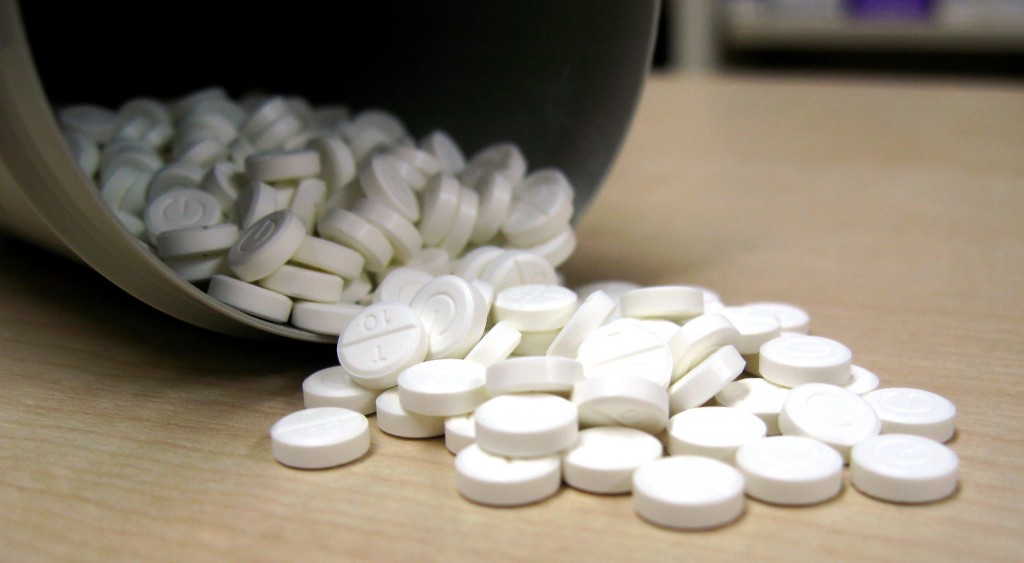The LA Times have published an in-depth report on OxyContin, which was at one point the best selling painkiller in the USA (and continues to generate billions. However, as the LAT reveal, the pills promise of 12-hour pain relief proved erratic, subjecting millions to ‘excruciating’ withdrawal symptoms, and triggering a nationwide ‘prescription opioid epidemic’.
After an extensive period of investigating the records of Purdue Pharma, who make OxyContin, the LAT have shared their disturbing findings. The opening instalment: ‘You Want A Description Of Hell?’ OxyContin’s 12-Hour Problem’ is a history of Purdue’s misrepresentation of OxyContin, and the disastrous effect the painkiller (described as ‘a chemical cousin of heroin’) has had on US public health:
Purdue has known about the problem for decades. Even before OxyContin went on the market, clinical trials showed many patients weren’t getting 12 hours of relief. Since the drug’s debut in 1996, the company has been confronted with additional evidence, including complaints from doctors, reports from its own sales reps and independent research
The company has held fast to the claim of 12-hour relief, in part to protect its revenue. OxyContin’s market dominance and its high price — up to hundreds of dollars per bottle — hinge on its 12-hour duration. Without that, it offers little advantage over less expensive painkillers
Purdue tells doctors to prescribe stronger doses, not more frequent ones, when patients complain that OxyContin doesn’t last 12 hours. That approach creates risks of its own. Research shows that the more potent the dose of an opioid such as OxyContin, the greater the possibility of overdose and death
[READ] ‘Better Parked Than Dead’ Neil Woods of LEAP UK on heroin and healing
The LAT procured the “Purdue documents from court cases and government investigations… [they] include many records sealed by the courts”. The article also draws together interviews with healthcare experts and people with prior experience of opiate addiction – the combination makes for a distressing read:
Experts said that when there are gaps in the effect of a narcotic like OxyContin, patients can suffer body aches, nausea, anxiety and other symptoms of withdrawal. When the agony is relieved by the next dose, it creates a cycle of pain and euphoria that fosters addiction, they said.
OxyContin taken at 12-hour intervals could be ‘the perfect recipe for addiction,’ said Theodore J. Cicero, a neuropharmacologist at the Washington University School of Medicine in St. Louis and a leading researcher on how opioids affect the brain.
Patients in whom the drug doesn’t last 12 hours can suffer both a return of their underlying pain and ‘the beginning stages of acute withdrawal,’ Cicero said. ‘That becomes a very powerful motivator for people to take more drugs’
OxyContin thus took hold of the lives of millions across the US since its introduction to pharmacies in 1996, claiming ‘more than 190,000 lives from overdoses’ in twenty years. The LAT have pored over previously confidential documents from court cases related to OxyContin abuse, and also accessed Purdue’s private internal memos:
The documents provide a detailed picture of the development and marketing of OxyContin, how Purdue executives responded to complaints that its effects wear off early, and their fears about the financial impact of any departure from 12-hour dosing
The LAT share an account of an LAPD Officer, who, after being forced into early retirement with a back injury sustained on duty, became addicted to OxyContin. Those closest to ‘fearless’ Ernest Gallego describe his mental and physical deterioration under the thumb of his so-called ‘medication’, as his compulsion to consume OxyContin accelerated him towards an uncharacteristic slovenliness and eventual death at age 57 (especially disconcerting considering the reputation Gallego earned during his career as a hands-on, indefatigable crime-fighter).
[READ] Fierce Care: Documenting Addiction in the UK
The article continues to delve into the business motivations behind this under-represented public health crisis. Detailing the first trials on OxyContin that took place in Puerto Rico, the LAT reveal that, despite over a third of trial subjects reporting feeling pain before the promised 12 hours of relief, Purdue maintained that the painkiller was not only safe, but that its effects laster longer than those of any of its pharmaceutical competitors:
In a 1992 submission to the Patent Office, the company portrayed OxyContin as a medical breakthrough that controlled pain for 12 hours ‘in approximately 90% of patients.’ Applying for a separate patent a few years later, Purdue said that once a person was a regular user of OxyContin, it ‘provides pain relief in said patient for at least 12 hours after administration’
Ostensibly conceived as a new painkiller for cancer patients to replace a similar product that had made Purdue a lot of money previously, but one they were now close to losing as the expiration on its patent loomed, OxyContin brought the company considerable riches but also considerable damages.
The LAT hypothesise that their trying to cut corners with OxyContin, namely by continually overstating its analgesic capacities in marketing the drug to pharmacies, physicians and the US public en masse. The report continues in a similar fashion, serving on the whole as an eye-opening exposé to the disastrous effects that large, impersonal corporate interests are capable of (inadvertently, for the most part) inflicting on the public, as a consequence of taking liberties with advertising, and short cuts in developing new, potentially lucrative, drugs.
Read the entirety of the LA Times investigative feature on OxyContin here
Words by Calum Armstrong tweets @vf_calum
[READ] Mapping Britain’s Drug Damage


